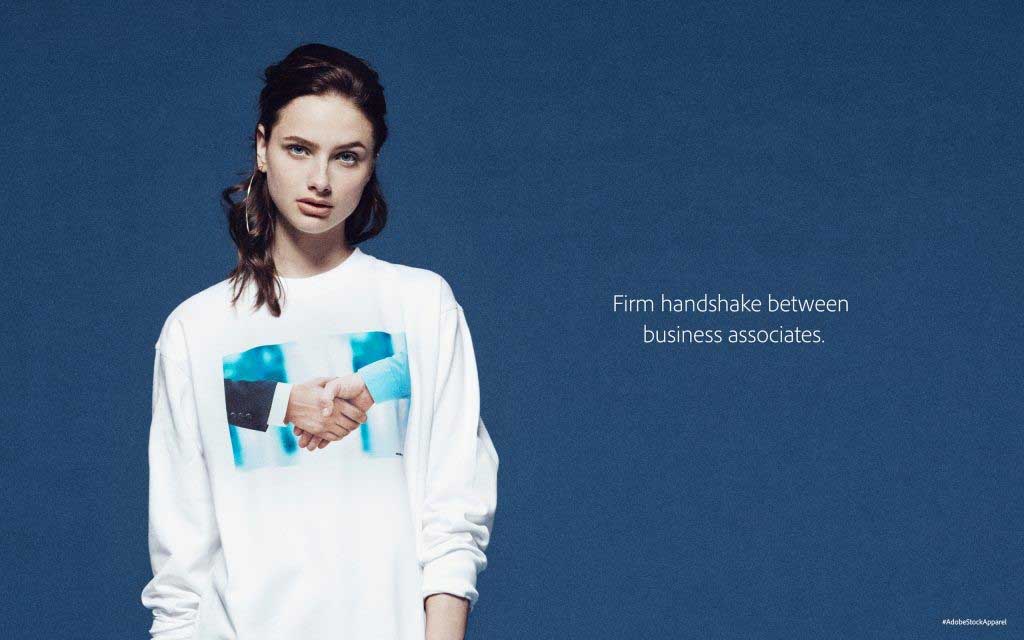In a guest post from Adobe’s Richard Curtis, Principal Solutions Consultant for Digital Imaging, we explore how the world of stock photography is set to change over the years.

As the stereotypes and gloss associated with stock photography become a thing of the past, what type of content are we set to see more of in stock and content libraries in the coming years?
How are formats changing, how is content changing and what social trends are behind this? Finally, with the explosion of technology such as VR, what might we see more of in the future when it comes to stock libraries?
Times are changing
We all remember the days when stock photo libraries were filled to the brim with nothing but business clichés. Those awful stock images that people would use time and time again in PowerPoint presentations, such as “man frustrated in front of laptop” are becoming a thing of the past.
As we know, over the past few years there has been something of a revolution in the creation and distribution of imagery, driven largely by social media, which has meant people are met by an overwhelming flow of visual images every day.
Brands and agencies have had to respond quickly to this explosion of content, and in line with this, stock and content libraries have also had to adapt and change.
Content creators now have much freedom and autonomy for thought leadership, to work on new ideas, push boundaries and concepts that are more compelling and relevant for usage across channels and audiences.

The new normal
Photos and videos are now a universal language and the way the world consumes images and tell stories is changing. This new language is extremely diverse, covering war to celebration, current affairs to climate change, as well as refugees to personality profiles.
These images reflect the often beautiful, and sometimes turbulent world in which we, however, the content is deeply rooted in integrity and truth.
Understandably, Stock imagery changes in line with changes to society. As the world becomes a more tolerant and global environment, we’re going to see a shift in the type of images we see on a day to day basis. In 2017, this means that we’re seeing a real boost in authentic imagery.
Defining, “Authentic imagery” means content which reflects diversity; a celebration of different cultures and customs and ultimately, the more transparent world which we now find ourselves in.
Stock images are representing the new normal; real images that don’t sugar coat the issues faced by everyday people, offering portrayals of different ages, ethnicities, sexualities, genders and backgrounds. This only serves to make images more interesting and relevant to people’s lives.
Adobe has been quick to notice the wind of change and predict a new opportunity for stories and creative content to be more authentic supported by real world imagery and content.
We recently announced an exciting partnership with Thompson Reuters and providing this feed directly within the Adobe stock content platform, directly available to all creatives, supporting the need for change in stories.

Out with the old, in with the … old?
Despite this explosion of authentic imagery, Adobe analytics show that the number of licensed images containing the keyword ‘vintage’ soared by 427% year on year across the globe on Adobe Stock, while searches including the term ‘nostalgia’ also saw an increase – with searches up by 61% year on year.
With a ton of everyday brand names like NatWest and Kodak digging into their design archives and revisiting the logos they used in the 1960’s and 70’s, we’re seeing a real shift to consumers wanting a taste of the ‘good old days’ when consuming content.
Whether it be brand logos, ads or packaging, it seems that the design world is looking at the old to inspire the new. This is intuitive – with vinyl records, vintage phones like the 3310 and upcycled furniture all making a comeback, it makes sense that the trend for nostalgia is also being reflected in stock imagery.
The prevalence of Instagram filters which offer a retro aesthetic cements this societal change.
Squaring Up
On the subject of Instagram – social media has also brought about a change in preference for formats. Despite the early 2000s trend of 16:9 widescreen domination, the advent of Instagram has encouraged a swing in the opposite direction.
With monthly users now topping 700 million, the Facebook-owned photo sharing platform has driven us to crave the squared-off symmetrical images we’ve become accustomed to seeing on our newsfeeds.
With brands constantly on the look-out for high res imagery to support corporate social channels, it’s only natural that we’ll start to see more square images being made available in stock image libraries.
Virtually famous
So we’ve talked about imagery, but what about other types of content? It’s clear that 2017 is becoming the year that machine learning comes to life, with a whole host of innovative tools being built and developed to improve the creative process.
This tech quite literally brings new perspectives, with aerial photography guided by drones and 3D composites just some of the revolutionary new types of content coming into vogue.
We’re also seeing something of a video revolution. We’re consuming over 1 billion hours of video per day on YouTube alone, and by 2020, nearly 80% of all Internet traffic is projected to come from video consumption.
Stock video plays an important role in fulfilling this demand, gracing televisions, movie theatres, computer screens, and everything in between.
To keep up with this growing demand, Adobe is partnering with the likes of Pond5, as well as other high value content providers to further expand it’s video offering. Pond5 in particular offers a diverse library of videos, motion-graphics and more, sourced from an international community of artists.
Looking further ahead, the dominance of virtual reality could also have an influence on the stock world.
As user demand grows and the hardware costs steadily decrease, corporations and small businesses alike are turning to VR to create amazing brand experiences for consumers; everything from travel agents offering customers the chance to virtually experience new destinations before booking holidays or checking out concert seats before they buy them.
To help create this content, and quickly, content creators, designers and developers will need to turn to stock libraries where such assets are available.
It’s clear then, that like society, the world of stock content is constantly adapting and expanding to reflect consumer tastes and trends. From widescreen to square, corporate to authentic and modern to nostalgic, stock is a fluid force which adapts to suit the changing face of the planet it portrays.




